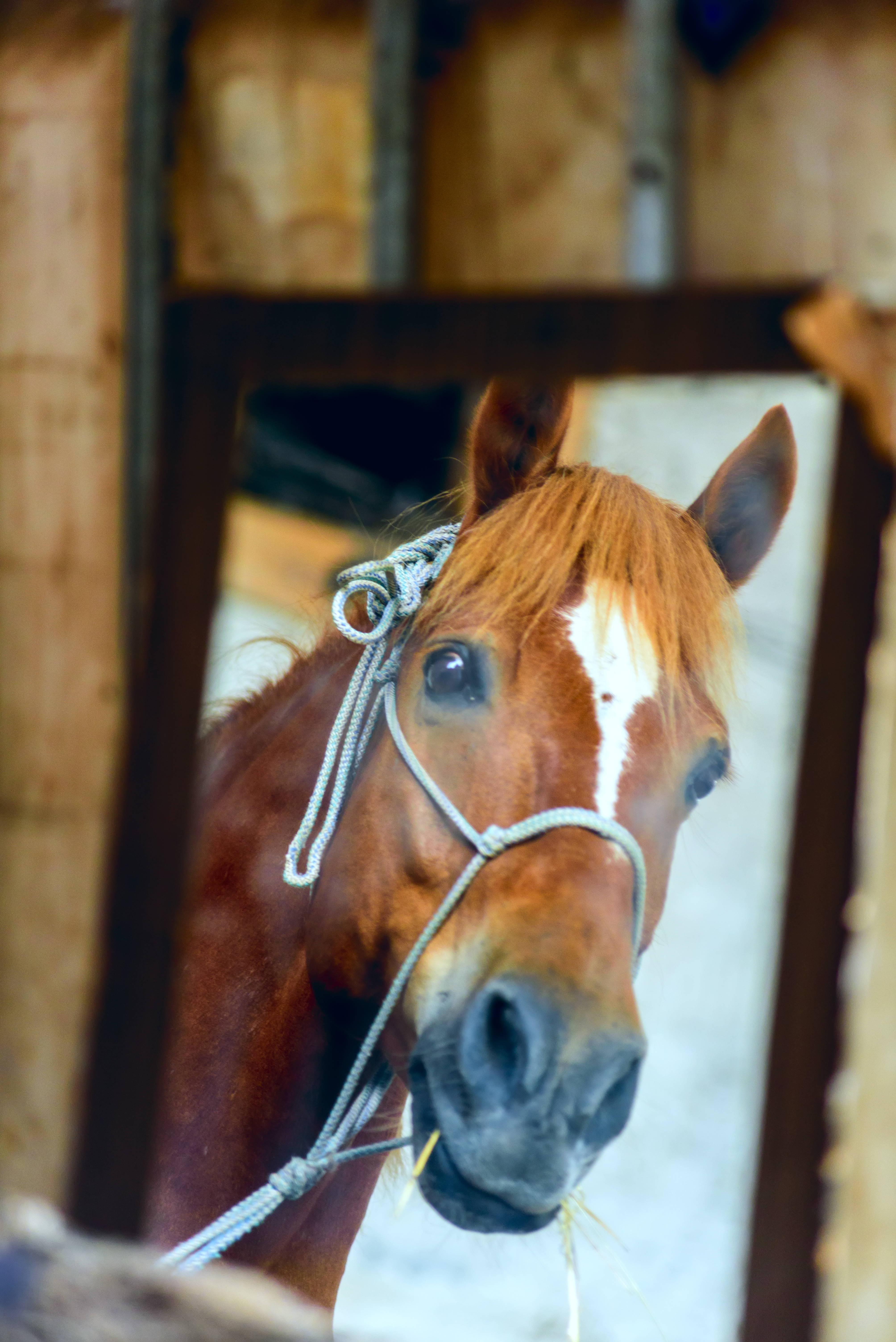Can a horse recognize himself in a mirror?
- January 7, 2021
- ⎯ Christine Barakat with Mick McCluskey, BVSc
When a horse peers at his reflection in the arena mirror, does he know he’s looking at himself? Researchers in Italy are working to answer that question, but the nature of horses themselves is complicating the effort.

“Of course, horses and animals in general don’t have a need to recognize themselves in the mirror—they don’t need to shave or put on makeup,” says Paolo Baragli, DVM, PhD, of the University of Pisa, “but the ability to recognize themselves in a mirror is a building block of self-awareness. Mirror self-recognition highlights the cognitive and emotional skills that are necessary to develop complex social relationships and to engage in behaviors relying on the different levels of empathy. For this reason, comparative psychologists, primatologists and ethologists have concentrated their efforts over the past four decades on the study of mirror self- recognition in animals, in and out the primate order.”
To determine whether horses have this ability, the Italian researchers first acclimated four horses to an enclosure that contained a mirror, which was first covered and then uncovered. They then conducted the mark test paradigm, a standard method of gauging self-recognition in individuals.
“This paradigm remains the cornerstone of such studies,” explains Baragli. “Animals should perform a sequence of behaviors [when confronted with the uncovered mirror] which leads them to understand the function of a mirror. Such behaviors can be broken down into these steps: first, social response, which is wondering “who is she/he?” as they look at the reflection; physical mirror inspection, including looking behind the mirror and repetitive mirror-testing behaviors, such as making strange faces.”
Click here to learn how to read equine body language.
The researchers videotaped the horse’s interactions with the mirror the first time it was uncovered to help identify and quantify these behaviors.
After these initial observations were made, the study horses were marked with an “X” on the lower right or left cheek, a location that could be seen by the horses only by looking in the mirror. In some trials, the “X” was -made with translucent gel; in other trials the gel was colored, to control for the horses reacting to the sensation of the gel (tactile perception), rather than the sight of it (visual perception). The researchers then watched to see if the horses would take any action, such as scraping the cheek on their legs or a fence, to remove the colored X from their own face after seeing it in the mirror. This may be indicative of the fact that the horses perceived the reflection as their own. Once again, researchers videotaped the behavior for later analysis and data collection.
The resulting data did not affirm that horses can recognize their own reflections, but Baragli says this may simply reveal a shortcoming in the testing methodology, which was developed for primates. “Not all animals which passed the mark test also performed the behaviors we looked for in the first part of the study,” he says. “In our opinion, due to different cognition, motivation, sociality, anatomical and perceptual characteristics, we cannot exclude that different animal species could follow different ways to demonstrate their ability to recognize themselves in the mirror.”
What’s more, says Baragli, it’s possible that a horse simply wouldn’t be motivated to remove a colored mark from his face. “One of the criticisms to the mark test paradigm is that it starts from an anthropomorphized point of view: Like humans, an animal should be motivated to remove unusual signs on its own body. Is that true? Owners will tell you that pastured horses are usually muddy and the horses don’t seem to have a problem with that. Can we be sure that horses did not remove the colored mark because they don’t recognize themselves in the mirror? Could they simply not be interested in cleaning up their bodies? Is this experimental design adequate to cover this gap in nonprimate species such as horses?”
Baragli hopes that more research, possibly with an altered testing format, will determine whether a horse looking at himself in a mirror knows who he is seeing.
Reference: “Are horses capable of mirror self-recognition? A pilot study,” PLoS One, May 2017
This article first appeared in the August 2017 issue of EQUUS (Volume #379)
Don’t miss out! With the free weekly EQUUS newsletter, you’ll get the latest horse health information delivered right to your in basket! If you’re not already receiving the EQUUS newsletter, click here to sign up. It’s *free*!





